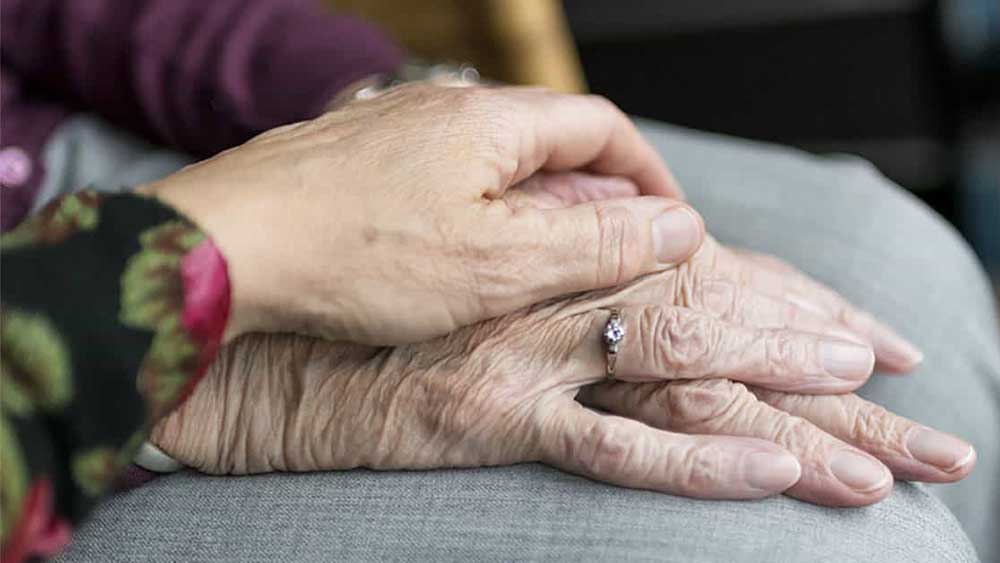

Common Health Issues in Older Adults
As people age, a number of health conditions can shift, causing mild irritation and consternation to a full outbreak of pain and disability. Many changes in physical condition and ability gradually occur, and what is considered a ‘minor health issue,’ a cut on the skin for example, can be a serious health risk to an elderly person.
So how can a senior ward off the common health issues of aging and remain healthy overall in later life? Are certain declines in health inevitable or actually preventable? The following are five age-related health changes in older adults and prevention measures for each condition.
1. Skin
Dryness, wrinkles and age spots can all occur as the skin ages. Older people have fewer oil glands and perspire less, increasing skin dryness. Aging skin also thins and loses fat, so the skin appears less supple and smooth. Smoking is detrimental on the skin, harming skin’s elastin proteins and increasing facial wrinkles. Taking a number of medications or dealing with medical issues such as an underactive thyroid or cardiovascular or renal conditions can also stress and dry out the skin.
Prevention Steps:
- Protect your skin from the damaging effects of sun exposure. The American Academy of Dermatology offers a number of valuable resources on sun safety including how to select and apply sunscreen.
- Get an annual full-body skin check from a professional dermatologist.
- Prevent skin dryness and itching by increasing humidity in the home and countering the drying effects of winter overheating and summer air conditioning.
- Go easy on using antiperspirants, soaps and perfumes, and taking hot baths or showers — all of these are drying on the skin.
- Keep adequately hydrated.
- Ask your doctor about getting the shingles vaccine.
2. Dental
Children are not the only ones who can get cavities. As the teeth’s outer protective enamel layer wears down, bacteria in the form of sticky dental plaque can cause tooth decay and cavities. Plaque that remains on teeth too long builds up into hardened tartar, which brushing cannot clean. Gum disease, also known as periodontal disease or gingivitis, can cause gums to swell, recede from teeth and form pockets that can become infected. The infection can deteriorate gums, bone and tissue that hold teeth in place.
The elderly may also experience a problem with dry mouth, which makes a person more cavity prone. Dry mouth is a side effect of more than 500 medications, including those for allergies, anxiety, high blood pressure, pain and high cholesterol. Oral cancers are another problem that increases with age. The American Cancer Society cites that the average age for mouth, throat or tongue cancer is age 62.1
Prevention Steps:
- Brush your teeth at least twice daily with a fluoride toothpaste. Clean between teeth daily with dental floss or a special flossing product.
- Clean dentures daily with specific cleaners designed for dentures.
- Relieve dry mouth symptoms by drinking more water and using an over-the-counter spray or mouthwash moisturizer. If dry mouth is a problem, check with your physician about changing medications or dosages.
- Visit your dentist at least once a year for teeth cleaning and a dental exam.
- If daily oral care is challenging, talk with your dentist or dental hygienist about a different approach with keeping teeth and gums clean.
- Quit smoking. Smoking leads to increased problems with tooth decay, gum disease and tooth loss.
3. Sensory
Vision and hearing are two of the body’s main senses that are affected by age. For many people, eyesight begins to diminish around age 40. The National Institute on Aging reports that roughly one-third of people ages 65 to 74 experience hearing loss, and nearly half of people age 75 and older have trouble hearing.2 Problems with vision and hearing can lead to depression, withdrawal, anger and loss of self-esteem, especially in the elderly.
Vision loss with age includes presbyopia, a slow loss of the ability to see close up. Cataracts, glaucoma and retinal disorders such as macular degeneration also increase with age. Age-related hearing loss, or presbycusis, is gradual but should not be ignored if left untreated. Many seniors also encounter tinnitus, which causes a ringing, roaring or other bothersome noise in the ears. In many cases of eyesight or hearing loss, corrective lenses, hearing aids, medications or surgery are treatments that can help.
Prevention Steps:
Eyesight
- Get a yearly eye exam if you are over age 50 or have known health risks.
- Eat a nutritious diet that promotes healthy eyesight. Foods packed with vitamins A, C and E and rich in omega fatty acids help protect the eyes from dryness and infection.
- If you smoke, quit. Smoking significantly increases the risk for macular degeneration that causes blurring or vision loss in the eye’s center field of vision.
- Wear durable eye protection for activities that could injure the eyes (e.g., certain contact sports, construction, metal working, handling firearms and working with chemicals).
Hearing
- Avoid exposure to loud noises. Wear earplugs, ear muffs or custom ear gear when around activities or events with excess noise.
- Turn down the volume on music, the television, etc.
- Use a smartphone app that measures noise levels, and be sure it is properly calibrated for an accurate reading.
- Talk to your doctor about medications that can be harmful to hearing.
- Know your family history and medical conditions that can cause hearing deficits.
- Ask your doctor about a hearing screening as part of an annual physical. After age 50 or if you or others notice your hearing diminish, make an appointment with an audiologist for a hearing health evaluation.
4. Bones and Joints
The body’s weight-bearing bones and major joints take considerable wear and tear over the years. By the time a person reaches their 60s, they face two of the most common forms of age-related health conditions: osteoporosis and arthritis. Osteoporosis is a gradual process of a person’s bones thinning, losing density and becoming fragile to the point of easily breaking. Women are the most susceptible to this bone weakening, and the bones typically affected are the hip, spine and wrist.
A survey reported that arthritis, one of the most prevalent causes of chronic pain, affected an estimated 54.4 million Americans, and almost half of them were age 65 and older.3 There are more than 100 types of arthritis, including gout and lupus. Osteoarthritis, the joint wear-and-tear condition, is the most common form of arthritis in older adults. Rheumatoid arthritis is an autoimmune disease that occurs when a person’s immune system attacks the body’s healthy tissues, eroding the lining of joints (synovium) and triggering painful inflammation.4
Prevention Steps:
Osteoporosis
- Check with your physician about when to get a bone mass density scan.
- Participate in weight-bearing exercises such as walking, weight lifting and other types of strength and resistance training to strengthen bones.
- Consume adequate amounts of calcium-rich foods daily or take calcium supplements.
- Be sure to get enough vitamin D in your diet, which helps your body absorb calcium.
Arthritis
- Control your weight to take extra stress off joints.
- Avoid injuries to bones and joints by wearing proper sports equipment and getting adequate safety training for work and play.
- Do not smoke. Smoking is linked to developing rheumatoid arthritis.
- Eat a nutritious diet with low amounts of alcohol, sugar and purines. Consuming fish rich in omega-3 fatty acids has shown to reduce inflammation and lower the risk for rheumatoid arthritis.
5. Urogenital
The aging process also creates less-talked about problems with both men and women: urogenital symptoms of urinary incontinence, urinary tract infections and an enlarged prostate. With age, the bladder’s elastic tissue may toughen and stretch less, limiting the amount of urine the bladder can hold and prompting the need for more frequent urination. In older adults, the muscles in the pelvic floor and bladder wall may weaken, causing urine to leak or difficulty in fully emptying the bladder.
Older women are more likely to encounter issues with bladder control, while senior men may struggle to even pass urine because the prostate gland tends to grow bigger with age and can constrict the urethra tube that directs urine out of the body. In addition, the average age for prostate cancer is age 66, and more than 70% of men over age 80 have some level of cancer cells in their prostate.5
Prevention Steps:
- Be aware of factors that affect bladder health. Some medications, caffeine and alcohol can bother the bladder. Some people find that sodas, artificial sweeteners, and citrus- and tomato-based foods make bladder problems worse.
- Practice wise health habits overall. Since there is no sure-fire prevention for prostate cancer, medical professionals recommend reducing risk for the disease by maintaining a healthy weight, staying physically active and eating a diet high in certain vegetables including cruciferous vegetables (broccoli, cabbage and cauliflower).
The bottom line for lowering one’s risk for common health problems of aging? Throughout one’s adult years, stay intentional about a healthy diet, exercise and regular health exams. The effects of aging do not happen overnight.
1 American Dental Association, Mouth Healthy. Concerns. Retrieved from https://www.mouthhealthy.org/en/adults-over-60/concerns.
2 National Institute on Aging. Hearing Loss: A Common Problem for Older Adults. Retrieved from https://www.nia.nih.gov/health/hearing-loss-common-problem-older-adults.
4 Arthritis Foundation. What is Rheumatoid Arthritis? Retrieved from https://www.arthritis.org/about-arthritis/types/rheumatoid-arthritis/what-is-rheumatoid-arthritis.php.
5 National Council for Aging Care. Prostate Cancer: A Guide for Aging Men. Retrieved from https://www.aging.com/prostate-cancer-a-guide-for-aging-men/.







